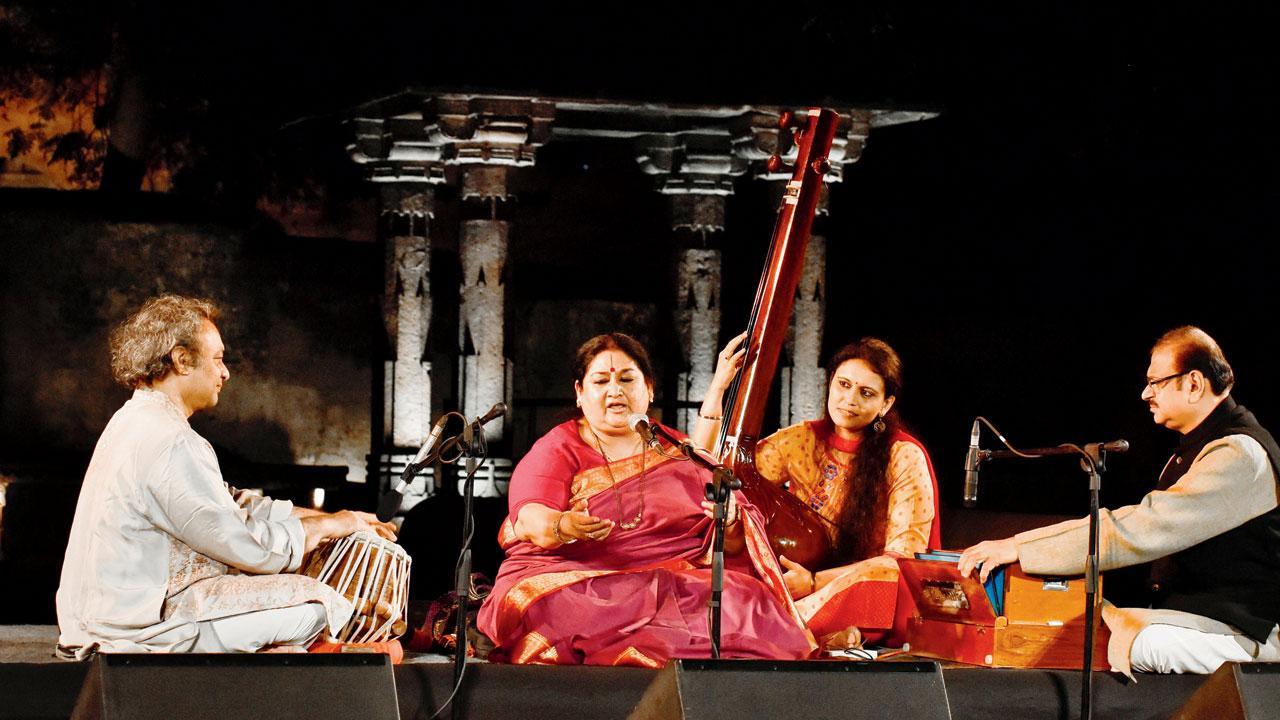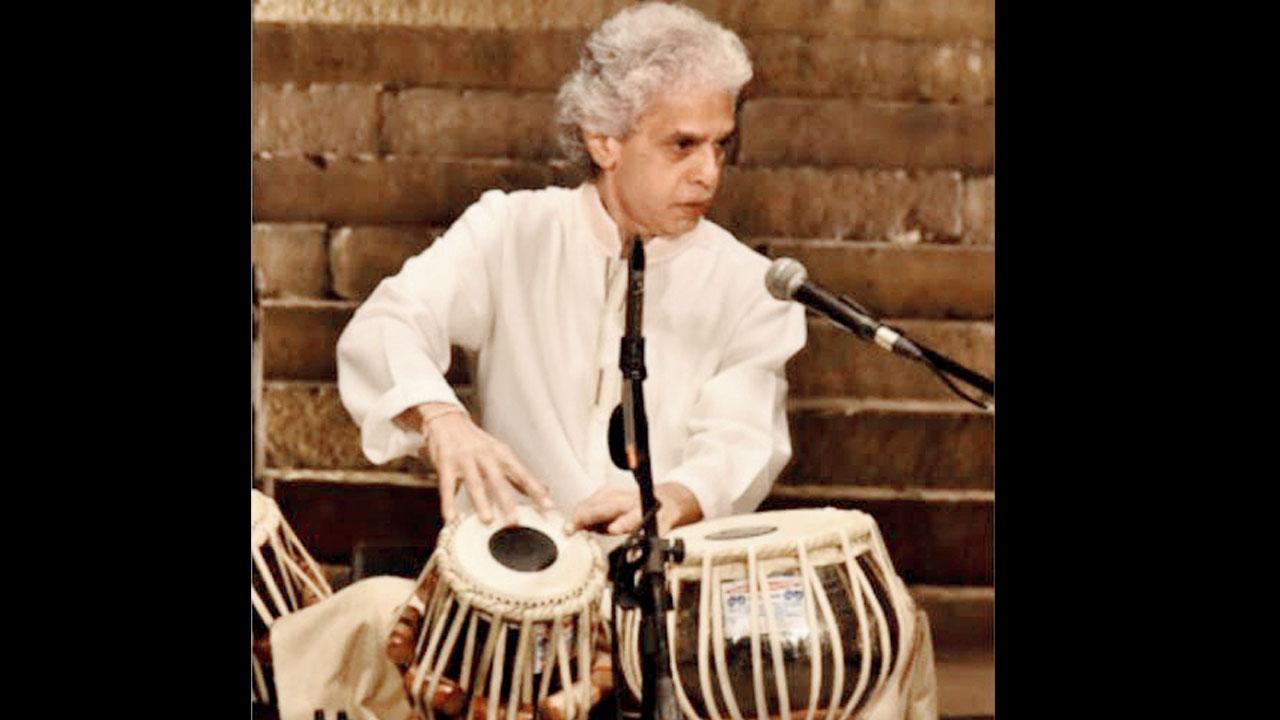A virtual concert this weekend aims to revive people’s interest in Dada Harir Vav, a 15th-century stepwell

Shubha Mudgal (centre) performs at Dada Harir Vav
It’s hard to say what kind of architectural remnant from the past is the most penetrating preacher of history. The idea of latching on to their stories to link our present to them, and the historical gamut of our past is so intertwined that people constantly revisit these monuments to make sense of our shared existence. Crraft of Art’s (COA) annual Water Festival is an event that highlights the importance of that juxtaposition. “We are taking monuments to the people, but creatively. This time, it is Dada Harir Vav,” says Birwa Qureshi, founder and artistic director at COA. The musical treat that will be streamed online this weekend will be sans a live audience for the second time in a row. “Although places have opened up, we are still recovering from the pandemic and so, we shot the live concert,” Qureshi shares. With the elaborate corridors and steps of the vav (a stepwell) in the background, the pre-recorded event will showcase two sets of performances by artistes Shubha Mudgal, Ustad Fazal Qureshi and Khete Khan, among others.
ADVERTISEMENT

Fazal Qureshi
But what’s special about this particular vav? Qureshi, who’s been trained in interior design and Bharatnatyam, says, “Art was an integral part of my growing up years. Gujarat being my home state, I keep going back to it for creative meanderings. The Dada Harir Vav in eastern Ahmedabad, although less known, is no less majestic in its cultural significance.” The story goes that the edifice was built by Bai Harir Sultani, the superintendent of the royal harem and household lady of Mahmud Begada, a prominent 15th century sultan from Gujarat. Her tomb in the Sultani Mosque is right behind the stepwell. The vav is an attraction for its characteristic Solanki architecture. It is five-storey high, 70-metres deep and stands out amid the many wells in Gujarat for its octagonal shape.
Qureshi explains that her intention over the past 12 years has been to devise a meeting of art forms and address the rather recent disconnect between people, especially the youth, and tangible heritage. The performances are in tune with COA’s comprehensive outlook. Presented by Ustad Fazal, Khan and Nitish Ranadive, the first set charts out the convergence of three musical worlds — Indian classical, western classical and folk percussion, all bound by the unifying thread of rhythm. The second piece by Mudgal, Aneesh Pradhan, Sudhir Nayak and Pooja Vazirani deftly mixes khayal and dadra compositions. It draws inspiration from the all-encompassing theme of water and the structure’s magnificence.

Birwa Qureshi
The experience of performing live without an audience has been surreal for Ustad Fazal, he shares. Speaking over the phone in between recording sessions, his voice sounds enthused as he revisits the setting: “You don’t often find a vav with a mosque nearby, and that too in the middle of an old city. The stepwell lit up as we were performing; in earlier years, we have performed on the premises of a monument but never inside it, as big gatherings and loud vibrations can cause damage to old constructions. I had my stage at the very bottom of the stepwell for this year’s festival. We performed inside the well and it felt surreal.” He adds that he can’t quite forget the reverberations produced due to the high ceiling and steps, while Persian and Sanskrit inscriptions adorned the walls.
On: November 21, 6 pm onwards
Log on to: bookmyshow.com
 Subscribe today by clicking the link and stay updated with the latest news!" Click here!
Subscribe today by clicking the link and stay updated with the latest news!" Click here!







